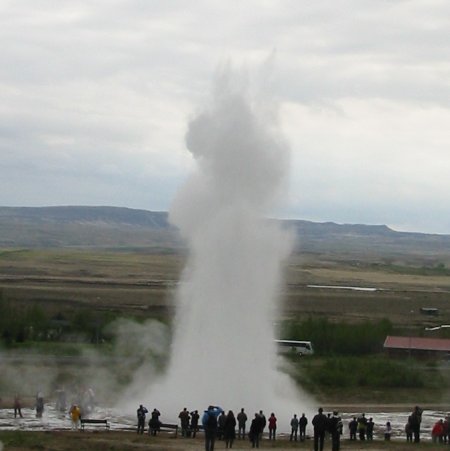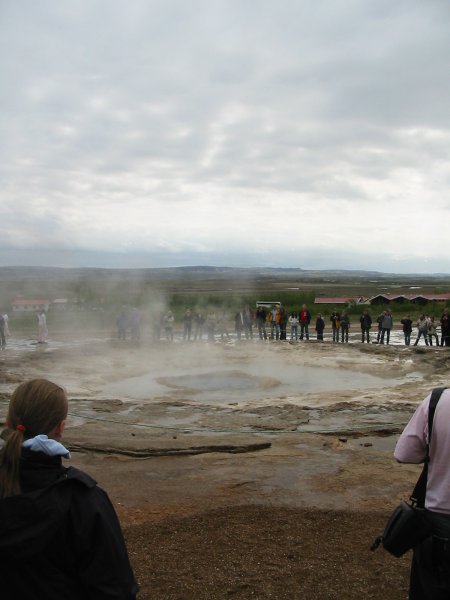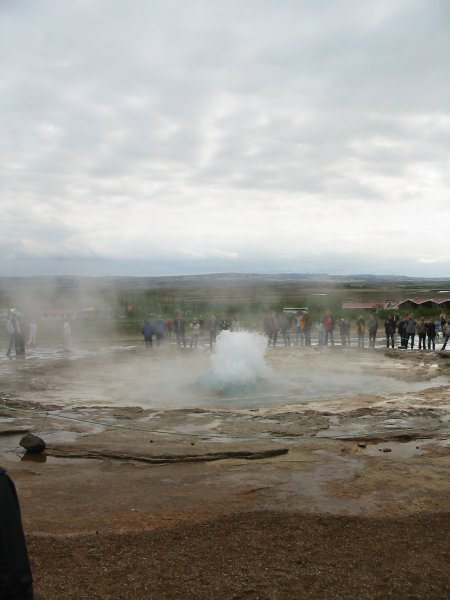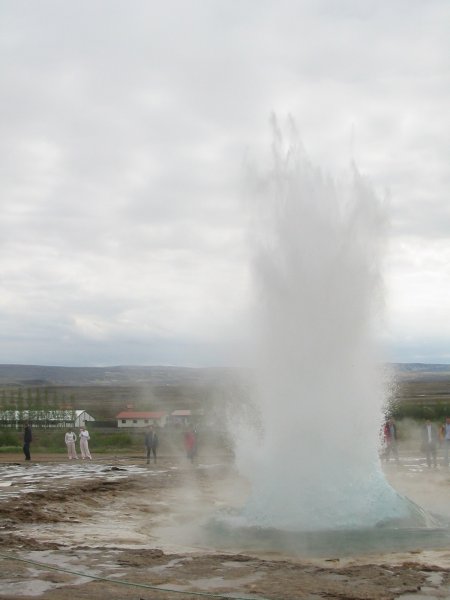Strokkur

How does a geyser work?
 after giving a talk at Reykjavik university I was able to visit Geysir, the geyser that gave its name to the phenomenon. and while Geysir itself is gently boiling along these days (see left) and is not erupting on a regular basis anymore, its neighbour Strokkur is there to please us tourists:
after giving a talk at Reykjavik university I was able to visit Geysir, the geyser that gave its name to the phenomenon. and while Geysir itself is gently boiling along these days (see left) and is not erupting on a regular basis anymore, its neighbour Strokkur is there to please us tourists:



A geyser works by overheating — much like a pressure cooker. Hot springs are usually fed by an underground water basin that gets heated by volcanic activity. The basin is connected to the surface through cracks and drians in the ground where cold water percolates through down to the bassin while by convection hot water rises to the surface. For a geyser the surface connection is a tube so narrow, that unlike in a normal hot spring no convection can take place. Thus as the water in the tube cooles down it increases pressure on the water in the bassin, which stays liquid well over the normal boiling temprature. Still at some point the water in the bassin vaporizes making some of the water at the tubes outlet to overflow. This reduces the pressure and the water vaporizes violently pushing a column of steam and hot water out of the tube. Similar to tumbling lid of a pot of boiling water.
October 18th, 2006 at 2:21 pm
[…] So I am not sure wether UK-based artscatalysts are planning something on the new European mars-on-earth-station in Iceland, but I may try to find out…. […]